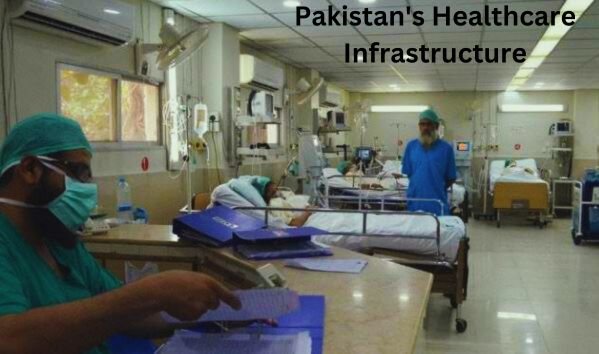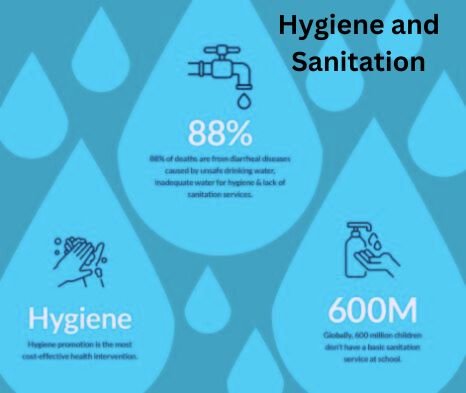What are Pakistan’s primary health problems and how do they affect the country’s population?
Health problems in pakistan and their solutions, we are referring to specific health problems that negatively affect an individual’s health, an illness, or the healthcare needs of the general public.
With a complicated web of infectious illnesses, a deficient healthcare system, Health problems in pakistan and their solutions, Pakistan confronts serious health concerns. Non-communicable diseases like diabetes and cardiovascular problems are on the rise, but communicable diseases like malaria and TB continue to exist. These problems are made worse by limited access to healthcare, especially in rural regions, which results in avoidable deaths and a general decline in quality of life. In order to meet these problems, a comprehensive strategy that addresses both infectious and chronic illnesses is required. Additionally, investments in a strong healthcare system must be made to guarantee equal access and better health outcomes for all individuals.

The top 5 healthcare concerns in Pakistan are as follows:
1. Pakistan’s Healthcare Infrastructure
The private sector provides services to around 70 percent of Pakistan’s population. Private hospitals and healthcare facilities often do better than their public equivalents in terms of overall healthcare quality and patient satisfaction.
Nonetheless, the majority of people living in Pakistan’s rural areas are subject to a high rate of illness and have little to no access to basic medical treatment.
The healthcare system in Pakistan faces several difficulties while maintaining a tight equilibrium between capacity and demand. Medical facilities have advanced with an emphasis on quality and accessibility, despite ongoing challenges. The country is always working to become more resilient, strengthening its healthcare system to accommodate the changing demands of an expanding populace. Notwithstanding these obstacles, Pakistan is committed to creating a strong healthcare system that is a symbol of constant effort and advancement.

2. Hygiene and Sanitation
Two of Pakistan’s biggest sanitation problems are inadequate sanitation and inappropriate food storage. Salmonella, E. Coli, and other pathogens can enter the human body through food contamination from dirty water and result in severe illness.
Among the top ten nations in the world without access to clean drinking water is Pakistan. In impoverished rural regions, most people do not have access to toilets. As a result, a lack of adequate facilities may cause additional issues for people, such diarrhea or bacterial infections.
Furthermore, a lot of girls are compelled to use unsanitary means of managing their periods, such handmade sanitary pads, since they lack access to resources and cleaning facilities. On the other hand, vaginal infections may arise from the frequent use of these methods.
The fundamental foundations of public health, hygiene and sanitation, are the careful procedures and guidelines meant to maintain and advance health. Hygiene, which has its roots in the promotion of cleanliness, includes both environmental and personal precautions to prevent the spread of infections. Simultaneously, sanitation coordinates a symphony of actions and facilities to protect populations from fecal-oral and waterborne illnesses. Collectively, they provide an unbreakable barrier against misfortunes, bringing society to the pinnacle of well-being and vibrancy.

3. Malnutrition
The high rate of maternal and infant mortality is partly caused by inadequate nutrition for children. Forty percent of children under five are underweight, and over fifty percent suffer from stunting. The body’s natural defensive systems are also compromised as a result of inadequate food.
A common disease, malnutrition represents the dangerous mismatch between the amount of nutrients taken in and what the body needs to function. This disease can take many different forms, from stunted development to cognitive impairment, and it subtly undermines vitality. Malnutrition, a severe result of insufficient food, has a detrimental impact on the health of the entire world and feeds a vicious circle of vulnerability and unrealized potential. Reducing its effects requires steadfast dedication to fair access to healthful food, a fundamental component of human well-being.

4. Infectious Diseases ,Health problems in pakistan and their solutions
Overcrowding, contaminated water supplies, poor sanitation, low socioeconomic status, low health awareness, and low immunization rates contribute significantly to Pakistan’s regional burden of many infectious diseases and put the country at risk of infectious disease epidemics.
The invisible masterminds of human illness, infectious illnesses represent the ongoing struggle between microcosmic invaders and the complex web of the human immune system. These sneaky invaders, which are frequently tiny invaders, sneak into the citadel of health and cause a wave of physiological chaos. They work in the domains of viruses, bacteria, parasites, and fungi, testing the limits of our biological sanctuary.
These microbiological enemies take advantage of weaknesses and maneuver through the intricate network of host defenses to take control. Their intrusions have far-reaching effects that persistently transcend boundaries and ripple across communities and society. Infectious illnesses, from the ancient plagues to the modern pandemics, have a unique power that has shaped history and spurred scientific advancement.
However, in the middle of the never-ending weapons competition, mankind uses the enormous force of medical research to unravel the mystery of infections, creating powerful defenses in the form of vaccinations, antibiotics, and antivirals. The front lines of the struggle against infectious illnesses represent the junction of human inventiveness and microscopic warfare, highlighting the need for international collaboration and unwavering attention to detail in order to protect life’s complex dance against these deadly adversaries.

5. Environmental Health Hazards
One of the main issues Pakistan is facing is pollution. Numerous illnesses are caused by environmental disruptions around the nation.
A research found that 92% of pollution-related fatalities occur in middle-income nations like Pakistan. Major difficulties include poor sanitation, waste management, noise pollution, air pollution, climate change, water pollution, and food insecurity.
Environmental health risks are a broad range of dangers that are extremely dangerous to both human health and the fragile balance of ecosystems. These sneaky threats stem from poisons, pollutants, and natural disequilibrium, which lead to detrimental effects on soil, water, and air quality. These risks are made worse by the constant threat of climate change, which signals the beginning of a series of negative effects on both the environment and human populations. In order to tackle these complex issues, we must remain steadfast in our support of cutting-edge technology, sustainable practices, and international collaboration. Only then can we build a strong barrier against the growing threat that threatens the fragile web of life as we know it.

What are some of Pakistan’s leading sources of health problems?
Among the several reasons of health problems in Pakistan are the lack of clean environments to live in, clean water to drink, and clean air to breathe.
It is not just the individual’s duty to protect, manage, and maintain the environment; everyone has a shared responsibility for ensuring its safety.
Pakistan has several health issues that are caused by a combination of circumstances. Inadequate sanitation contributes to the persistence of infectious diseases, such as cholera and other illnesses spread by water. This is highlighted by the lack of infrastructure. Non-communicable illnesses, such diabetes and cardiovascular problems, are on the rise due to changes in lifestyle and a lack of access to treatment. There are still issues with maternal and child health, characterized by high rates of malnutrition and inadequate prenatal care. Addressing these long-standing problems necessitates a multifaceted approach that combines public health programs, infrastructure improvements, and socioeconomic advancement.
How may Pakistan’s healthcare problems be resolved?
In order to guarantee that Pakistanis have access to first-rate medical care, the government must act decisively. Furthermore, even if we may all contribute in tiny ways, together we can make a big difference in Pakistan’s public health problems.
Addressing the healthcare challenges in Pakistan necessitates a comprehensive strategy that prioritizes accessibility, innovation, and equitable distribution of resources. Implementing robust public health policies, bolstering healthcare infrastructure, fostering medical education, and leveraging technological advancements are imperative. Collaborative efforts between government, private sector, and international stakeholders can catalyze transformative change, ensuring a healthier future for all Pakistanis.
Which of the following best describes Pakistan’s health problems?
Increase the taxes on tobacco and alcohol.
Raise health-care standards. The government is responsible for making sure hospitals have adequate funding to provide effective patient care.
The main factor causing issues with public health is global warming. Global warming is a result of increased greenhouse gas emissions from the production and disposal of products.
We may also take the additional step of recycling and reusing our household products to help reduce health concerns in Pakistan.
Pakistani health concerns need to be approached with a systematic and all-encompassing strategy. Crucial actions include funding a strong healthcare infrastructure, supporting primary care services, and improving public health education. Pakistan’s health environment may also be drastically changed by emphasizing illness prevention, encouraging healthy lifestyle choices, and encouraging foreign cooperation for medical knowledge and resources. Ultimately, the development of a healthier and more resilient country depends on coordinated efforts by the public, corporate, and community sectors.


